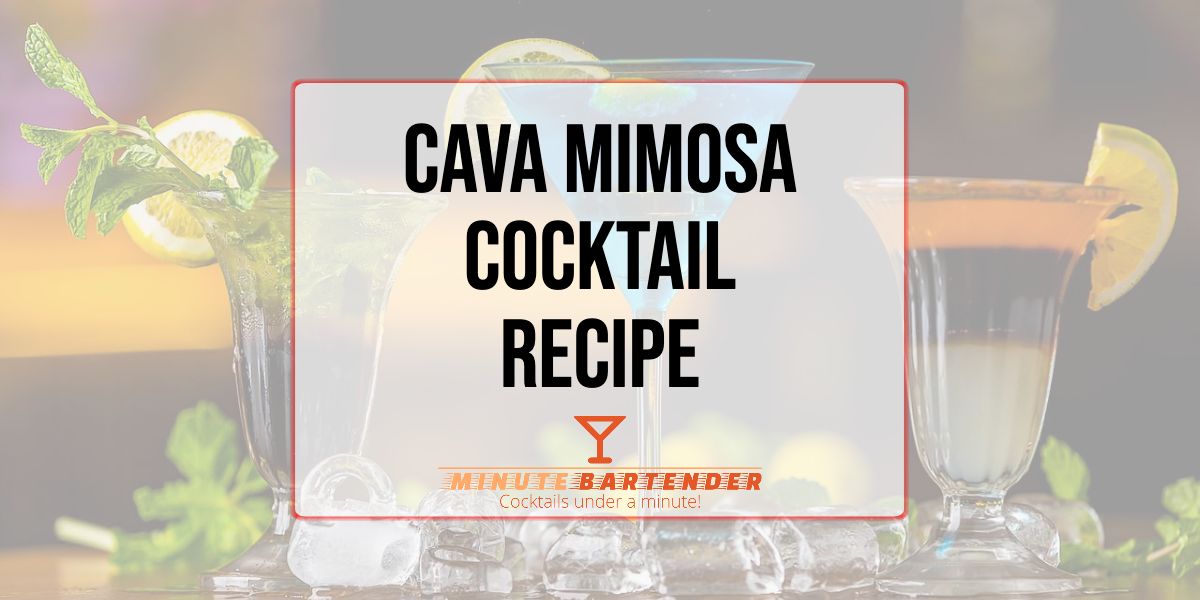The Claret Lemonade stands as a perfect example of how simplicity can create elegance. This wine-based cocktail transforms ordinary red wine into a refreshing drink that works equally well for casual afternoons and sophisticated dinner parties.
You get the best of both worlds with this cocktail. The rich, complex flavors of red wine merge beautifully with bright citrus notes and just enough sweetness to balance everything perfectly.
What Makes the Claret Lemonade Special
This cocktail brings together just three core ingredients to create something remarkable. The beauty lies in how each component enhances the others without competing for attention.
Red wine provides the foundation with its depth and character. Fresh lemon juice adds brightness and acidity that cuts through the wine’s richness. Simple syrup ties everything together with gentle sweetness that doesn’t overpower the wine’s natural complexity.
Claret Lemonade Ingredients
The recipe keeps things wonderfully simple:
- 4 oz red wine (preferably Bordeaux or medium-bodied Merlot)
- 1 oz simple syrup
- 3/4 oz fresh lemon juice
- 1 lemon wheel for garnish
- Fresh mint sprig (optional)
- 2-3 raspberries (seasonal garnish)
- Ice cubes
Choose your red wine carefully. A medium-bodied wine with fruity notes works best. Avoid wines that are too tannic or heavy, as they can overwhelm the delicate balance.
Step-by-Step Mixing Guide for Claret Lemonade
- Fill a wine goblet or large rocks glass with ice cubes
- Add the simple syrup to the glass
- Pour in the fresh lemon juice
- Add the red wine slowly, allowing it to mix naturally
- Gently stir the mixture 3-4 times with a bar spoon
- Garnish with a lemon wheel on the rim
- Add a fresh mint sprig and raspberries if desired
- Serve immediately while chilled
The key to success lies in the gentle mixing technique. You want to combine the ingredients without bruising the wine or losing its character.
Alternative Ingredients and Substitutes
Wine selection offers plenty of flexibility. Cabernet Sauvignon works well if you prefer more structure. Pinot Noir creates a lighter, more delicate version. Even a good Chianti can provide interesting earthy notes.
For the sweetener, you can substitute honey syrup (2:1 honey to water) for a richer flavor profile. Agave syrup works for those avoiding refined sugar. Maple syrup adds an interesting fall twist.
Lemon juice alternatives include lime juice for a sharper bite or grapefruit juice for more complex citrus notes. Blood orange juice creates a beautiful color and adds sweetness that might let you reduce the simple syrup.
What Makes This Cocktail Outstanding
The Claret Lemonade excels at being both approachable and sophisticated. New wine drinkers appreciate how the lemon juice softens the wine’s edges, while wine enthusiasts enjoy how the cocktail enhances rather than masks the wine’s character.
The drink changes throughout your sip. The initial citrus brightness gives way to the wine’s complexity, finishing with a clean, refreshing aftertaste that makes you want another sip.
Temperature plays a crucial role in the experience. The cocktail tastes best when properly chilled, which brightens all the flavors and makes the drink incredibly refreshing.
History and Creator of the Claret Lemonade
The Claret Lemonade traces its origins to the 1860s, with mentions in Jerry Thomson’s “How to Mix Drinks” from 1862. This places the cocktail firmly in the golden age of American cocktail culture.
The term “claret” itself has fascinating British origins. Claret is a centuries-old British designation for wines from the Bordeaux region in France, though the use was not exclusively used to describe Bordeaux wines and many red wines were called claret.
The cocktail traces its roots back to the 19th century and is inspired by Harry Johnson’s 1898 recipe, showcasing the timeless appeal of combining wine with citrus. This historical foundation gives the drink authenticity that modern craft cocktails often lack.
The drink emerged during an era when wine-based cocktails were extremely popular. Before Prohibition changed American drinking culture, wine cocktails like Claret Cup and Claret Lemonade were common at social gatherings.
Claret Lemonade Taste Profile
The flavor journey begins with bright citrus that immediately awakens your palate. The lemon juice provides clean acidity that prepares your taste buds for the wine’s complexity.
The red wine brings depth and character. You might taste dark fruit notes like blackberry or plum, depending on your wine choice. Subtle tannins add structure without being overwhelming.
The simple syrup rounds out the sharp edges, creating balance between sweet and tart. The overall effect is refreshing yet complex, light yet satisfying.
The finish varies based on your wine selection. Bordeaux varieties tend to leave earthy, mineral notes. Merlot provides softer, fruit-forward endings. The citrus keeps everything clean and bright throughout.
Serving Suggestions for Claret Lemonade
Presentation matters with this elegant cocktail. Serve in a wine goblet to honor the wine component, or use a large rocks glass for a more casual approach.
Temperature is critical. Pre-chill your glasses for the best experience. The cocktail should be cold enough that condensation forms on the glass.
Timing makes a difference too. The drink tastes best when consumed within 10 minutes of preparation. The ice continues to dilute the mixture, and the citrus can become overpowering if left too long.
Consider the setting when serving. Outdoor summer gatherings work perfectly for this refreshing cocktail. Indoor dinner parties benefit from the drink’s sophistication. The cocktail transitions well from afternoon refreshment to evening aperitif.
Perfect Appetizers to Pair with Claret Lemonade
- The cocktail’s wine base makes it excellent with cheese selections. Soft cheeses like brie or camembert complement the drink’s smooth character. Hard cheeses with nutty flavors enhance the wine’s complexity.
- Charcuterie works beautifully. Prosciutto, salami, and pâté all pair well with the red wine component while the citrus cuts through rich meats.
- Light seafood appetizers create interesting contrasts. Smoked salmon, shrimp cocktail, or oysters play against the wine in unexpected ways that somehow work perfectly.
- Mediterranean flavors shine with this cocktail. Olives, hummus, tapenade, and bruschetta all complement the European wine tradition while the lemon juice ties into Mediterranean cuisine.
- Fresh fruit and nuts make simple, elegant pairings. Figs, grapes, almonds, and walnuts echo the wine’s natural flavor companions.
Claret Lemonade Alcohol Content (ABV)
The cocktail typically contains 8-10% alcohol by volume. This makes it lighter than straight wine (12-15% ABV) but more substantial than beer.
A standard serving contains approximately 3.2 ounces of pure alcohol. This equals about 0.64 standard drinks, making it a moderate choice for responsible consumption.
The dilution from ice and mixers reduces the alcohol concentration compared to drinking wine straight. This makes the cocktail more sessionable for longer gatherings.
Consider serving smaller portions if alcohol content is a concern. The drink maintains its character well when scaled down to 3 oz wine with proportionally reduced mixers.
Nutritional Information for Claret Lemonade
One serving contains approximately 180-200 calories. The majority comes from the wine (about 125 calories) and simple syrup (about 50 calories). The lemon juice adds minimal calories.
Carbohydrate content ranges from 8-12 grams, primarily from the wine’s natural sugars and added simple syrup. The drink contains no fat and minimal protein.
Red wine provides antioxidants called polyphenols, particularly resveratrol, which may offer cardiovascular benefits when consumed in moderation. Studies suggest that moderate red wine consumption can have positive effects on blood parameters, including increased antioxidant status.
The vitamin C from fresh lemon juice provides additional antioxidant benefits, though the amount is small in a typical serving.
For those watching sugar intake, the simple syrup can be reduced or substituted with stevia-based sweeteners to lower the carbohydrate content significantly.
Final Thoughts on the Claret Lemonade
This cocktail proves that the best drinks often have the simplest recipes. Three ingredients create a drink that feels both timeless and contemporary.
The Claret Lemonade works because it respects its components. The wine remains the star while the citrus and sweetener enhance rather than mask its character.
Whether you’re entertaining guests or enjoying a quiet evening, this cocktail brings elegance without pretension. It’s sophisticated enough for wine lovers yet approachable enough for anyone who enjoys a well-balanced drink.
The historical roots give this cocktail authenticity that many modern creations lack. You’re not just making a drink – you’re continuing a tradition that spans more than 160 years.
Try making one tonight. You might discover that sometimes the most satisfying cocktails are also the most simple.











